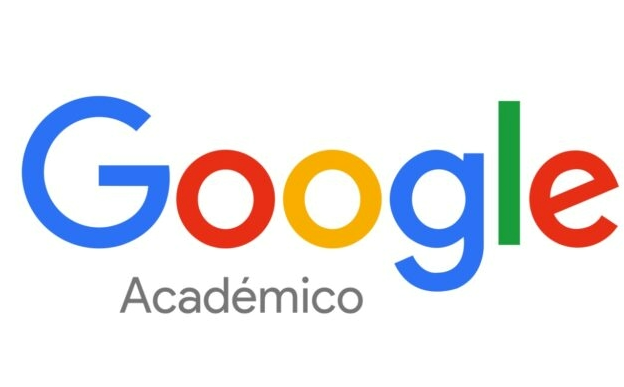Situación del Marco Legal que Sustenta la Inclusión en la Educación Superior del Paraguay
DOI:
https://doi.org/10.70833/rseisa12item204Keywords:
Inclusion, Higher Education, Legal FrameworkAbstract
This research called “The Legal Framework that Sustains the Inclusion in Higher Education of Paraguay Demand Changes”; has as general objectives; To conclude on the imperative of introducing changes in the Legal Aspect, regarding Inclusion in Higher Education; and Propose the axes for the change in the Legislation, related to Inclusion in Higher Education. And as specific objectives; Describe the way Inclusion in Higher Education in Paraguay is considered; explain the way in which Inclusion in Higher Education of Comparative Law is considered and Determine the axes on Inclusion that present gaps of legal deficiency. An investigation was carried out, with a Qualitative approach, its scope was Analytical - Descriptive. The exhaustive analysis of the found theories was carried out; the analysis and interpretation of the Constitution of the Republic of Paraguay, with regard to Inclusion; the analysis of laws - Statutes, Treaties and International Agreements, which consider the topics of Inclusive Education. The most relevant results show that inclusion is considered from the highest legal standards, however it is still a distant reality, so that it is fully met, by different factors of all kinds, but that the failure is not only in the lack of adequate infrastructure; but in the mental openness of each human being, which will progressively be realized. Among the recommendations can be named the need to carry out the necessary reforms, in the current legislation, in order to implement positively and effectively Inclusion in Higher Education; Adequacy of the statutes of the Public Universities, in a very precise and viable manner; that families join forces to fight for equality of conditions.
Downloads
References
Bogado, L. (2017). Presentación del Libro “Inclusión en el Sistema Educativo” de Salvadora Giménez y Santos Borregón. Recuperado el 03 de julio de 2017, de uni.edu.py: http://uni.edu.py/presentacion-del-libro-inclusion-en-elsistema-educativo-de-salvadora-gimenez-ysantos-borregon/.
Borregón, S., & Giménez, S. (2017). Inclusión y Sistema Eduativo. Orientaciones prácticas.Madrid: CEPE
Camilloni, A. R. (2008). El concepto de inclusión educativa. Recuperado el 2017, de http://www.seer.ufrgs.br/index.php/Poled/article/view/18347/10802.
Camilloni, A. R. (2008). El Concepto de Inclusión Educativa: Definición y Redifiniciones.
Decreto 10514. (2013). SENADIS. Obtenido de http://www.senadis.gov.py/archivos/documentos/Decreto%20Reglamentario%2010.514%20-%20Ley%204.720-12%20SENADIS_mvjcgrd7.pdf.
Elias, R. (2010). Taller regional sobre educación inclusiva. Recuperado el 2017, de http://live.v1.udesa.edu.ar/files/EscEdu/Inclusi%C3%B3n%20Educativa/27%20Roberto%20Elias%20(%20Paraguay).pdf.
Estatuto UNI. humanidades.uni.edu.py/wpcontent/uploads/2016/07/Estatuto-UNI.pdf
Estatuto UNVES. http://www.unves.edu.py/_admin/kcfinder/upload/files/REGLAMENTO%20GENERAL.pdf.
Estatuto UNE. http://www.une.edu.py/web/images/pdf/estatutoune.pdf. Estatuto Universidad de Pilar. http://unp.edu.py/estatutos/.
García de Fanelli, A. (2011). INCLUSIÓN SOCIAL EN LA EDUCACIÓN SUPERIOR ARGENTINA. http://webcache.googleusercontent.com/search?q=cache:http://www.scielo.edu.uy/pdf/pe/v7n2/v7n2a07.pdf.
Hernández Sampieri, R., Fernández Collado, C., & Baptista Lucio, P. (2010). Metodología de la investigación (5ta ed.). México: Mc Graw Hill.
Ley 1098/98. (1998). Global Infancia.Recuperado el 16 de junio de 2017, de http://www.globalinfancia.org.py/uploads/File/ddhhninezydiscapacidad/109898.htm.
Ley 3365. (07). SENADIS. Recuperado el 17 de Junio de 2017, de http://www.senadis.gov.py/archivos/documentos/LEY%203365-07_zpta3j0r.pdf.
Ley 789/79. (s.f.). INPRO. Obtenido de http://www.globalinfancia.org.py/uploads/File/ddhhninezydiscapacidad/inpro.htm.
Monge Rodríguez, M. (2002). Aprendizaje Colaborativo en la Educación Inclusiva Recuperado el 15 de agosto de 2017, de http://inico.usal.es/publicaciones/pdf/Educacion-Inclusiva.pdf.
Naciones Unidas. (2006). Convención Sobre los Derechos de las Personas con Discapacidad. Recuperado el 30 de mayo de 2017, de http://www.un.org/esa/socdev/enable/documents/tccconvs.pdf.
Pacheco, C. (2010). Atención a la diversidad. Recuperado el 2017, de https://mec.gov.py/talento/convocatoria01-16-nacional/ejesbibliografia/2-atencion-a-la-diversidad.pdf.
Salinas, M. A. (2013). La Inclusión en la Educación Superior, Chile.
Salinas, M. A. (2013). La Inclusión en la Educación Superior, desde la voz de estudiantes chilenos con discapacidad. REVISTA IBEROAMERICANA DE EDUCAÇÃO.
Sarrionandia, G. E. (2013). Inclusión y Exclusión Educativa. Recuperado el 2017, de REICE:
http://www.rinace.net/reice/numeros/arts/vol11num2/art5.pdf.
Sarto Martín, P. E. (2009). Aspectos clave de la Educación Inclusiva. Recuperado el 17 de agosto de 2017, de http://inico.usal.es/publicaciones/pdf/Educacion-Inclusiva.pdf.
Toboso, M. M. (2012). Sobre La Educación Inclusiva en España. Recuperado el julio de 2017, de http://www.intersticio.es.
UNESCO. (1990). Declaración Mundial Educación para Todos. Recuperado el 2017, de http://www.unesco.org/education/pdf/JOMTIE_S.PDF.
UNESCO. (2007). Taller Regional Preparatorio sobre Educación Inclusiva. Recuperado el 05 de Julio de 2017, de http://www.ibe.unesco.org/fileadmin/user_upload/Inclusive_Education/Reports/buenosaires_07/argentina_inclusion_07.pdf.
UNESCO. (2008). Perspectiva Educación Inclusiva. Recuperado el 2017, de http://campusmoodle.proed.unc.edu.ar/pluginfile.php/51957/mod_book/chapter/5633/Perspectivas%20UNESCO.pdf.
Downloads
Published
How to Cite
License

This work is licensed under a Creative Commons Attribution 4.0 International License.
Creative Commons Attribution License CC-BY
You are free to:
Share — copy and redistribute the material in any medium or format.
Adapt — remix, transform, and build upon the material for any purpose, including commercially.
Under the following terms:
Attribution — You must give appropriate credit, provide a link to the license, and indicate if any changes have been made. You may do so in any reasonable way, but not in any way that suggests that you or your use is endorsed by the Licensor.







